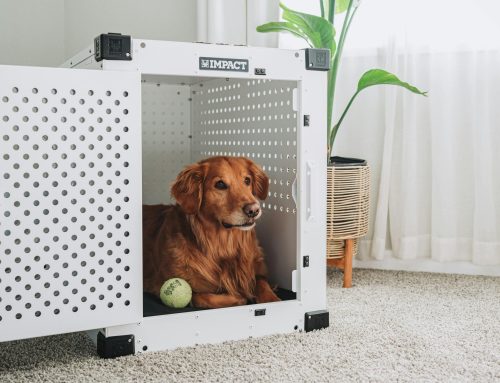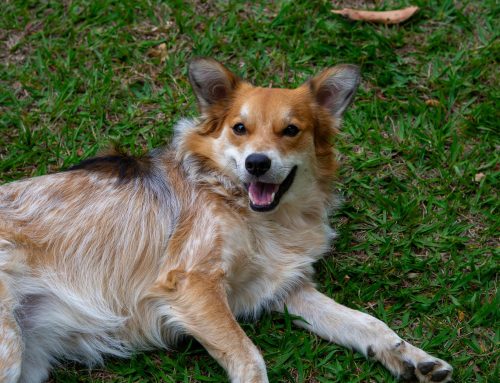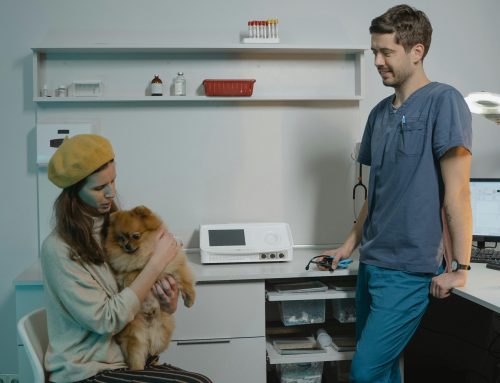
You’ve found a lump on your dog or cat and you want to know what to do. It is certainly reasonable to worry about this new growth and have it checked. This is one of the most common things our veterinarians are asked to examine. Our doctors schedules routinely have appointments for “check cyst”, “lump under skin”, or “check new growth”. This raises an interesting question; what are these things called? The truth is, most of our clients use these terms interchangeably and our veterinarians will know what you mean, no matter what you call it. We hear all of these:
- Cyst
- Mass
- Growth
- Lump
- Bump
- Tumor
- Mole
- Swelling
Some of these terms are more specific than others. For instance, cysts tend to be filled with fluid or thick discharge. The term tumor is often reserved for something that is cancerous. After our veterinarians examine the mass, they will be able to give you a better idea of what it is actually called. Often, they will recommend some simple diagnostic tests to get a fuller understanding of what is causing the growth. Sometimes no treatment is needed. Occasionally the growth is more concerning, and our doctors will recommend removal. There are some differences between dogs and cats, and even between specific breeds. These differences may make it more likely for your veterinarian to recommend removal of a particular growth. For instance, Boxer dogs, which are near to our heart, are much more likely to have a type of tumor called a “mast cell tumor”. Their increased risk for these masses makes us more likely to recommend early mass removal in these breeds.
It is also very important to note that small masses are always easier to remove than large ones. It is generally better to have a new mass checked out as soon you find it. If it needs to be removed, it will be much easier on your pet, and more affordable for you to have it done sooner rather than later. Unfortunately, if a mass is allowed to grow it can become quite complicated to remove.
Let’s take a closer look at why diagnostics are so important and some of the types of growths we see:
Testing for Growths
The first step in diagnosing a growth is a complete exam by one of our veterinarians. They will be looking for some very specific things. Key differences like firmness, redness, location, attachment and growth rate are important. The veterinarian will also be looking for other masses than may be smaller and less noticeable. The most common next step is to perform a simple test called a “fine needle aspirate”. This involves taking a sample of the cells that are causing your pets new growth and looking at them under the microscope. A small needle, about the same size we would use for vaccines, is used to collect some of the cells from deep in the growth. These cells are placed onto a microscope slide and examined. While the veterinarian may look with our microscope, more commonly the slides are sent to laboratory where they can be evaluated by a veterinarian specially trained in microscope diagnostics. While any veterinarian can interpret what they see, the veterinary clinical pathologists spend years training to read small differences in these cells that can make big differences in your pet’s life.
Another test that can be done is a biopsy. This test usually done in special circumstances or if the needle aspirate didn’t give us a definitive answer. This is more invasive than a needle aspirate, but usually done as an outpatient procedure. For our pets, we often perform a full biopsy, where the entire growth is removed and sent to the laboratory. Occasionally if the growth is in a very difficult location like the lower leg or the mouth, our doctors may take a partial biopsy. This will give them a better idea of how serious the growth is before they remove it. Your pet will need to be sedated or anesthetized for a biopsy.
Based on the results of the exam plus any testing our veterinarians may recommend removal of the growth or continued monitoring. Often for benign and non-cancerous masses no further testing or procedures will be needed. It is still important to monitor these growths closely and let your veterinarian know if they change.
Removal of Growths on Dogs and Cats
If the results on the tests indicate a potentially cancerous tumor, or if the growth is causing your pet pain or discomfort, our doctors will recommend removal. Surgical removal is usually very straightforward. If the mass is located in a challenging area such as on the lower legs or in the mouth the surgical procedure becomes more complicated. Again, the smaller the tumor the easier it is to remove. It is important to note that tumors are rarely removed without at least some of the surrounding skin. Many of the tumor cells spread our further than what is visible. Veterinarians surgically remove the skin around the growth to increase the likelihood that the entire tumor is removed. More aggressive tumors require the surgeon to remove more space around the tumor.
After the veterinarian removes the growth it can be submitted to the laboratory for a confirmation of the diagnosis. This step is also very important because it can indicate whether the entire growth was removed. The laboratory report also gives good information on severity and possible spread of the tumor.
Types of Common Masses in Dogs and Cats
Our veterinarians see certain types of masses very commonly. These masses tend to occur more frequently on dogs than cats. Unfortunately, cat growths are more variable and often require more thorough diagnostics to ensure a proper treatment. These common growths range from very benign and harmless to severe and cancerous.
-Lipomas: Lipomas are fatty masses that are loosely attached under the skin. These are very common in older dogs and dogs that have lost a lot of weight. Lipomas are rarely aggressive and often do not need to be removed. Occasionally, they can be large or painful and our doctors may recommend surgery if they seem to be causing your pet any discomfort.
-Skin Tags: Skin tags are another common type of growth in older dogs. They are actually just an accumulation of normal skin but can become rather pendulous. Most of the time skin tags do not need to be removed, but as they grow, they may become raw or uncomfortable. The good news is they are usually very easy to remove. They are one of the few growths that are occasionally removed with just sedation and not anesthesia.
-Cysts: There are several types of cysts that dogs and cats can get, but they are all similar in their structure. A cyst is a special type of growth that is filled with body secretions. This can be fluid or a wax like substance. Cysts often rupture causing a mess and an open wound. Depending on size and type cyst the veterinarian may recommend removal. After a cyst has ruptured it can become infected or painful, and it is more likely the doctor will recommend removal at this time.
-Sebacious Adenomas: Sebacious adenomas resemble warts. Technically, they are a tumor of the oil glands in a dog’s skin. These are common in older small breed dogs. Luckily, they are usually benign and pose no great threat. Rarely, they can become inflamed and painful. Also, sometimes we remove these masses when they become so numerous that they are bothersome.
-Histiocytoma: Histiocytomas are common in young growing dogs and look similar to the much more aggressive mast cell tumor. Happily, histiocytomas are generally not the type of skin mas that spreads or causes severe problems. Often, these tumors grow rapidly over a few weeks. They often go away on their own without any surgical removal. If they remain for an extended period of time or if they become raw and ulcerated your veterinarian may recommend removal.
-Mast Cell Tumors: Mast cell tumors are a common form of skin cancer. They are often red and raised, but can mimic other types of growth, even lipomas. Mast cell tumors are common in certain breeds like the boxer and Staffordshire terriers but are possible in all dogs and even cats. Removal of a mast cell tumor is always recommended as they can be aggressive and spread quickly. These tumors also usually involve some follow-up diagnostics to ensure that they have not already spread.
-Melanoma: Like in people, melanoma is a common skin cancer of dogs. These tumors are not always related to sun exposure and can occur anywhere on the dog’s body. They are particularly dangerous if they are on the toes or around the mouth. Just like with mast cell tumors, our doctors always recommend removal of Melanomas. They also may recommend some further testing to ensure the cancer hasn’t spread.
Other Types of Masses or Tumors:
We’ve limited our discussion to growths on or near the skin, but our pets can develop these problems in other organs too. Many of these other locations are not noticeable without a physical exam from the veterinarian. In fact, during each exam with our doctors they are feeling for these growths in the abdomen, throat, lymph nodes and throughout your pet. Growths in these other areas tend to be more severe and warrant a more aggressive diagnostic approach.







Leave A Comment